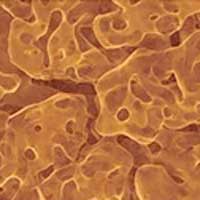| Nov 20, 2020 | |
|
(Nanowerk News) A team of researchers has amplified 3D graphene’s electrical properties by controlling its curvature (Advanced Materials, “Dirac Fermion Kinetics in 3D Curved Graphene”). |
|
 |
|
| An Electrical transport of 3D graphene with various curvature radii. (Image: Tohoku University) | |
| Graphene is a 2D atomic-layer material, shaped like honeycombs, which possesses excellent electrical, chemical, thermal, and mechanical properties for a wide range of applications such as semiconductors, electrical batteries, and composites. | |
| Graphene sheets stacked together form graphite which makes up the lead in our pencils. However, packing together graphene tightly means it loses its 2D electronic properties. | |
| One way to overcome this is to separate the graphene sheets with air-filled pores–like a sponge–at the nanometer scale and make it into a three-dimensional structure. This amplifies graphene’s properties for practical purposes. | |
| But doing so is not without its challenges; converting 2D graphene into 3D graphene introduces crystal defects and a host of other problems that cause it to lose its desirable characteristics. Little is known about how the curved surface degrades the graphene’s electric transport properties and whether this is the reason for graphene losing its Dirac fermions. | |
| The research team sought to investigate this by taking a single, 2D graphene sheet and folding it into a 3D structure with a bicontinuous and open porous structure. | |
| The structure, with a curvature radius down to 25-50 nanometers, retained the basic electronic properties of 2D graphene well. Meanwhile, the motion of electrons on the 3D curvature enhanced electron scattering that had originated from the intrinsic curvature effects. In fact, nanoscale curvature provides a new degree of freedom to manipulate graphene’s electronic behaviors for the emergent and unique electrical properties of 3D graphene. |
These articles might interest you as well:

